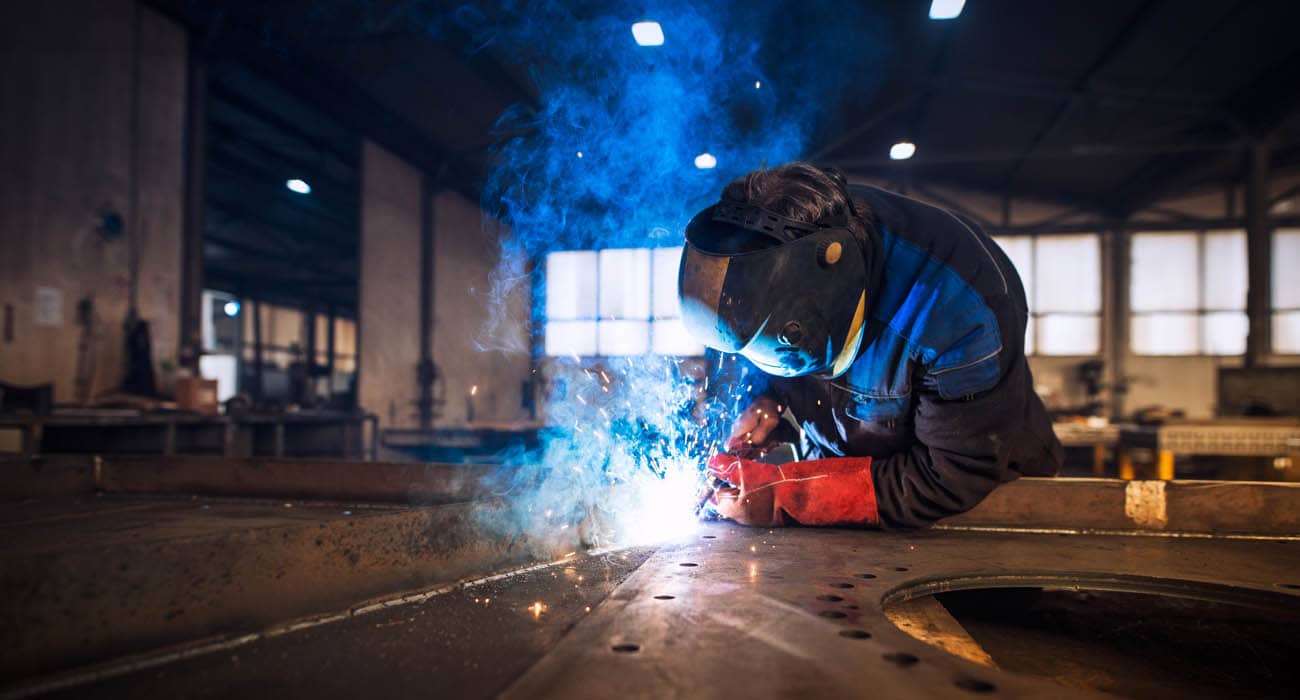
Manufacturing is the making of a new product through physical or chemical transformations by using machinery, capital, and investments. The manufacturing industry is the vast industry in India. The manufacturing industry includes manufacturing automobiles, food processing & consumer goods, pharmaceutical and drugs, chemical, cement, electrical equipment, textile, and electronics.
According to India Brand Equity Foundation (IBEF) manufacturing sector in India accounts for automobile manufacturing-25.8 %, chemicals manufacturing other than fertilizers: 18.5%, drugs and pharmaceutical manufacturing- 18.0%, food processing industry- 10.4%, electrical equipments manufacturing- 10.0%, cement and gypsum manufacturing- 5.3%, textiles manufacturing (both dyed & printed) – 3.7%, electronic manufacturing- 3.2%
Air Quality Problems in Manufacturing Industry
Industrial processes can lead to environmental degradation. The major degradation is seen in air and water quality. Emissions from industries increase the concentration of pollutants in the air which have a direct impact on human and environmental health. Manufacturing industries at a big scale have numerous departments within. Along with this, the emissions from industrial processes lead to occupational hazards at workplaces. A major contributing pollutant from industries is Particulate Matter (PM 10 and PM 2.5). Along with this Particulate matter, SOx, NOx, VOCs, and HCHO are also released into an air environment.
HVAC System
Large-scale manufacturing industries have an HVAC system. The contamination is easily transferred through the HVAC system in the whole unit/ building whenever an infected person sneezes, talks or coughs.
Surface Contamination
Several machines are used in the manufacturing industry that can lead to surface contamination. These machines are continuously touched by different personnel in manufacturing units.
Dust (Particulate Matter)
A mixture of solid particles with liquid droplets makes Particulate matter. PM contains dust, dirt, soot, and smoke. Different industries emit different types of dust into the environment. For example, the cement industry releases gypsum dust (inorganic dust) and dust plaster which can react in the air to form other harmful compounds.
Carbon Dioxide
It is formed when hydrocarbon fuels are combusted completely. Appliances for electricity and heating release carbon dioxide when not operated on solar power. This can increase the global carbon burden. Too many CO2 levels show that the place is not properly ventilated.
Sulfur and Nitrogen Oxides
These oxides are released from electricity production, paper & pulp manufacturing, and even wood products manufacturing.
VOCs
Maintenance activities at industries release high concentrations of VOCs. Some industries offer emergency mock drills like fire training adding up a volume to VOCs concentration.
HCHO
Formaldehyde is released from power plants, incineration, and some wood products in industries.
Parking Lots
Many industries have parking lots. Entry and exit of vehicles from these lots release carbon monoxide, smoke, VOCs, NOx, and CO2 depending on the vehicle’s number.
Sewage Treatment Plants
Hydrogen sulfides and pathogens are found near STPs in manufacturing industries like automobiles and pharmaceuticals. The high concentration of hydrogen sulfides leads to AC gas leakage and corroding of electronic appliances. Pathogens cause infections in the human body.
Washrooms
The moist area promotes bad odor, growth of bacteria, viruses, mildew, molds, and other biological infections. Transmission of a pathogenic infection is high.
Noise & Temperature
Many types of equipment and activities operate at high noises which impact the hearing aid of employees. Some machinery release heat that can increase the temperature indoors.
Air Quality Solutions For Manufacturing Industry
Air Quality Monitor
- Helps you to know the quality of air present
- Installed with special sensors that continuously monitor the concentration of parameters like particulate matter, carbon dioxide, HCHO, tVOCs.
- Cost-effective and easily portable
- Monitors the key parameters in Real-time that are in sync with LEED, WELL, and ASHRAE
- Monitors PM10, PM2.5, PM1, CO2, TVOCs, HCHO, CO, temperature and humidity
PCO Cell
- Based on Photocatalytic Oxidation which combines UV-C irradiation with a catalyst
- Removes the harmful biological contaminants such as bacteria, viruses, fungi & mold, and spores in a time span of fewer than 24 hours.
- The efficiency rate of 99.99%
- Capable to kill SARS-COV-2 virus through molecular dissociation. Molecular dissociation kills the pathogen at its genomic level and is an irreversible change
Fresh Air Machine
- Gives clean and fresh air
- Filter pollutants in an indoor environment.
- Contains Carbon layer and HEPA filters
- Reduces regulation of bad air
- Increases fresh air regulation
- 200 m3/h of Clean Air Delivery Rate (CADR) for formaldehyde
- 334 m3/h of Clean Air Delivery Rate (CADR) for particulate matter
- Covering area of 24-41m2
- 05% filtration rate for PM 2.5, bacteria and virus

Get In Touch With Us
Contact us for more details about the air quality solutions.
Drop a message
